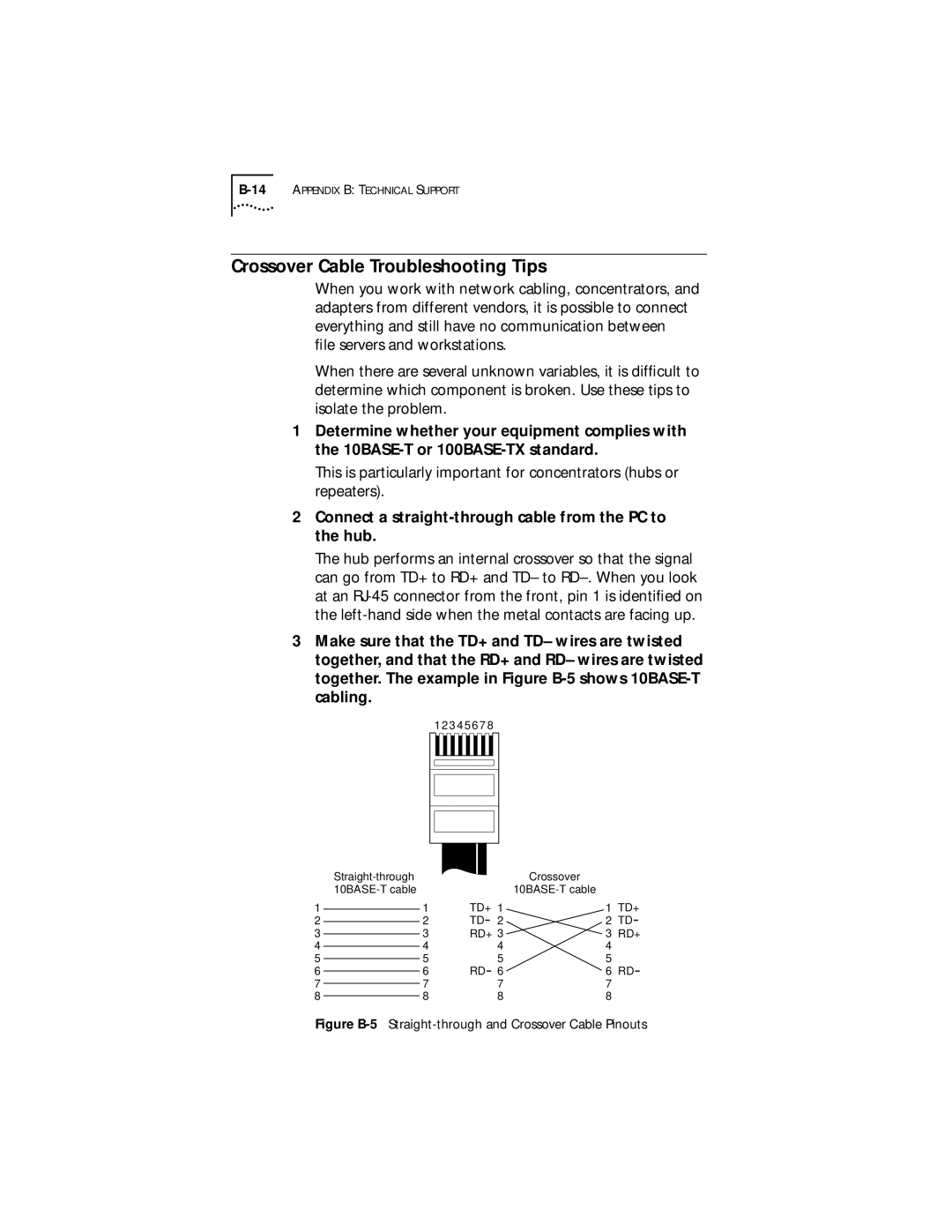
Crossover Cable Troubleshooting Tips
When you work with network cabling, concentrators, and adapters from different vendors, it is possible to connect everything and still have no communication between file servers and workstations.
When there are several unknown variables, it is difficult to determine which component is broken. Use these tips to isolate the problem.
1Determine whether your equipment complies with the
This is particularly important for concentrators (hubs or repeaters).
2Connect a straight-through cable from the PC to the hub.
The hub performs an internal crossover so that the signal can go from TD+ to RD+ and TD– to
3Make sure that the TD+ and TD– wires are twisted together, and that the RD+ and RD– wires are twisted together. The example in Figure
cabling.
.
12345678
|
|
|
| Crossover |
| |
|
|
|
|
| ||
|
|
|
|
| ||
1 |
| 1 | TD+ 1 | 1 | TD+ | |
| ||||||
2 |
| 2 | TD | 2 | 2 | TD |
| ||||||
3 |
| 3 | RD+ 3 | 3 | RD+ | |
| ||||||
4 |
| 4 |
| 4 | 4 |
|
|
|
| ||||
5 |
| 5 | RD | 5 | 5 | RD |
| ||||||
6 |
| 6 | 6 | 6 | ||
| ||||||
7 |
| 7 |
| 7 | 7 |
|
|
|
| ||||
8 |
| 8 |
| 8 | 8 |
|
|
|
| ||||
